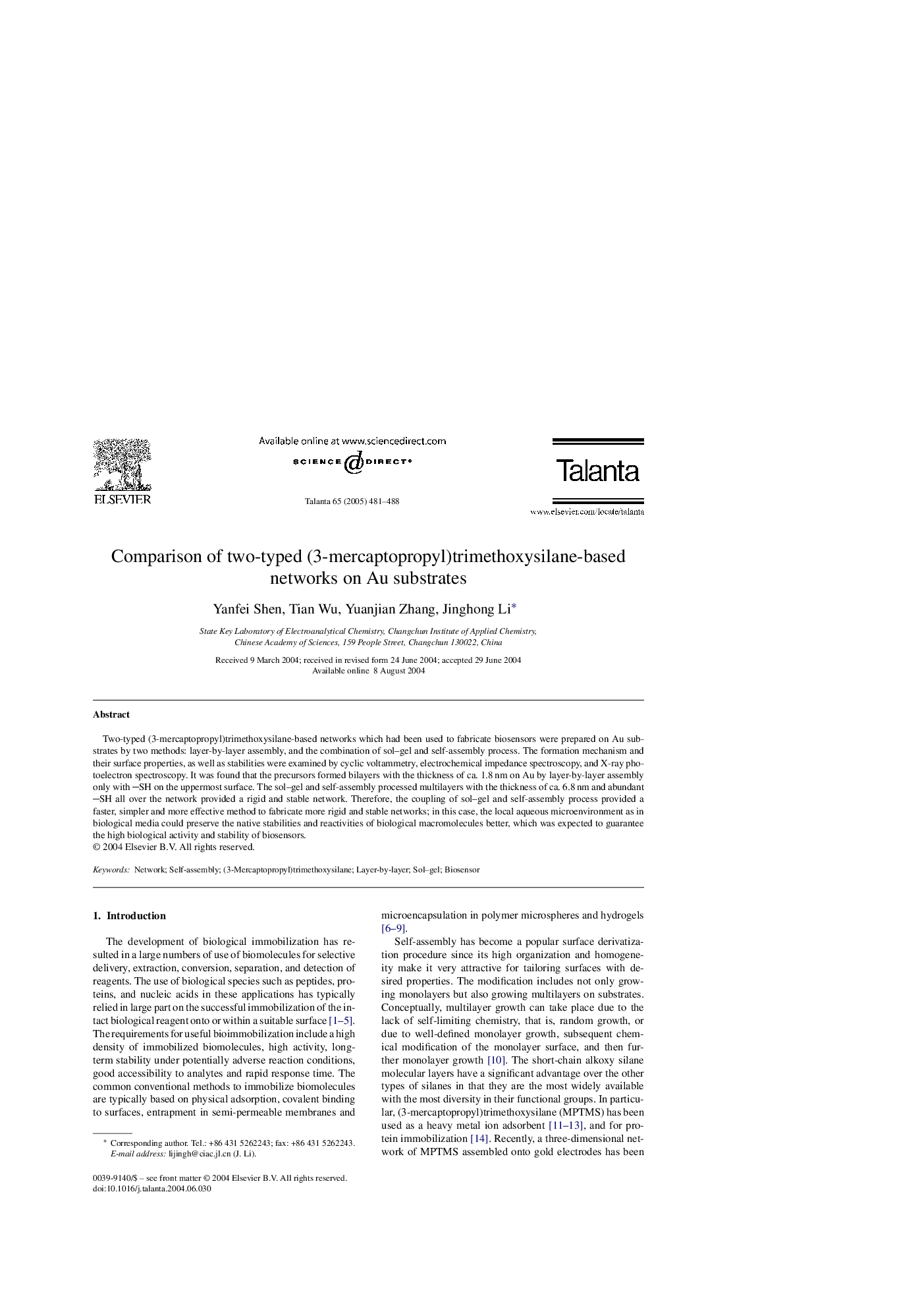| Article ID | Journal | Published Year | Pages | File Type |
|---|---|---|---|---|
| 10560077 | Talanta | 2005 | 8 Pages |
Abstract
Two-typed (3-mercaptopropyl)trimethoxysilane-based networks which had been used to fabricate biosensors were prepared on Au substrates by two methods: layer-by-layer assembly, and the combination of sol-gel and self-assembly process. The formation mechanism and their surface properties, as well as stabilities were examined by cyclic voltammetry, electrochemical impedance spectroscopy, and X-ray photoelectron spectroscopy. It was found that the precursors formed bilayers with the thickness of ca. 1.8Â nm on Au by layer-by-layer assembly only with SH on the uppermost surface. The sol-gel and self-assembly processed multilayers with the thickness of ca. 6.8Â nm and abundant SH all over the network provided a rigid and stable network. Therefore, the coupling of sol-gel and self-assembly process provided a faster, simpler and more effective method to fabricate more rigid and stable networks; in this case, the local aqueous microenvironment as in biological media could preserve the native stabilities and reactivities of biological macromolecules better, which was expected to guarantee the high biological activity and stability of biosensors.
Related Topics
Physical Sciences and Engineering
Chemistry
Analytical Chemistry
Authors
Yanfei Shen, Tian Wu, Yuanjian Zhang, Jinghong Li,
